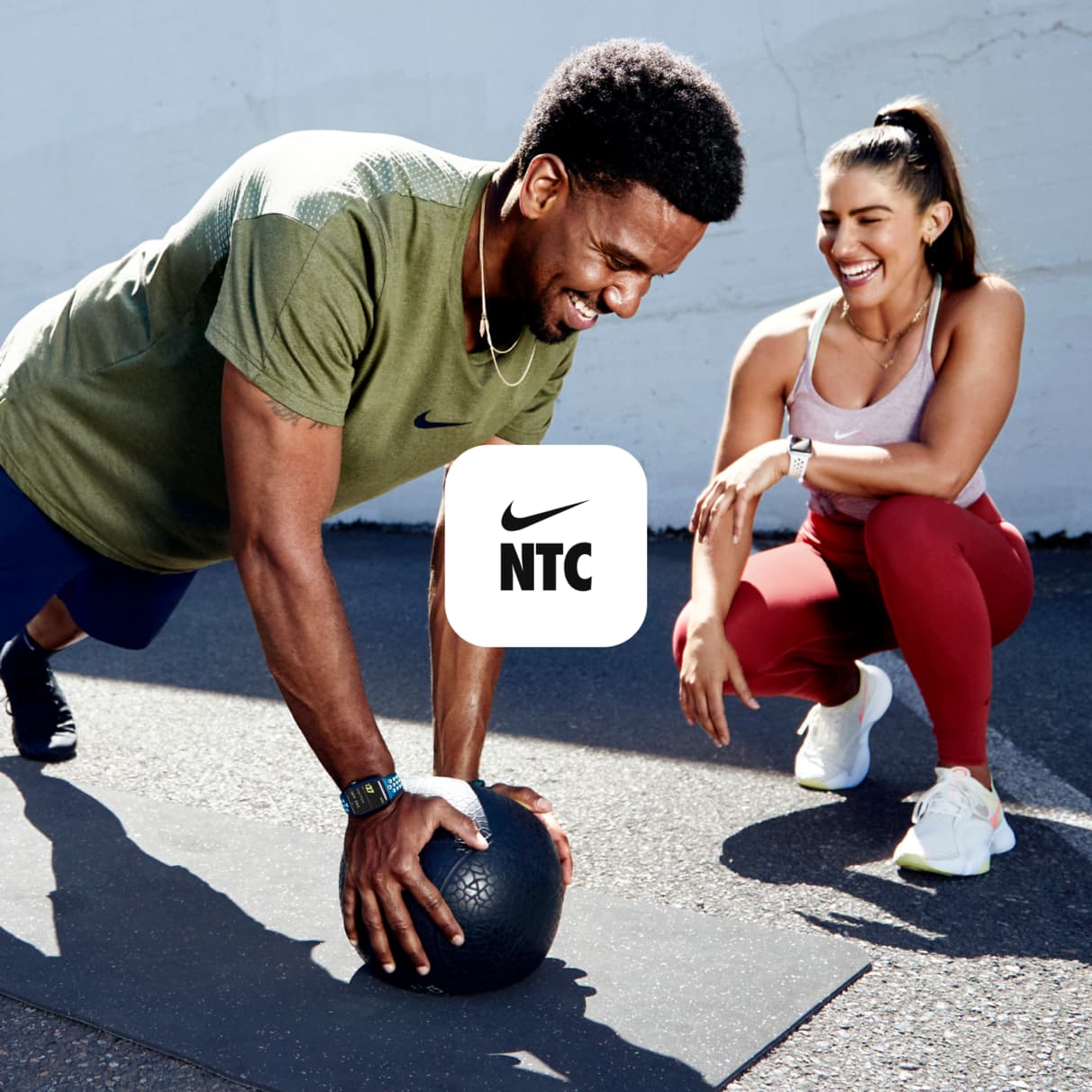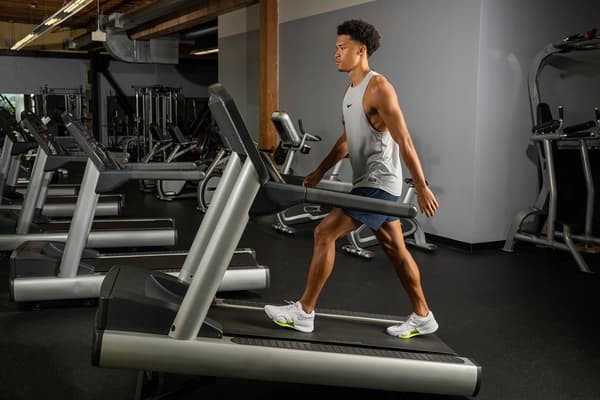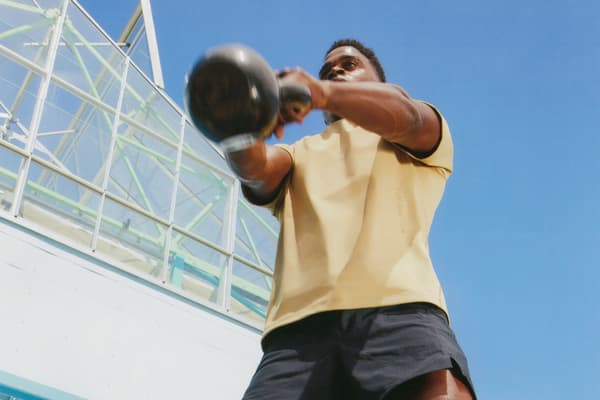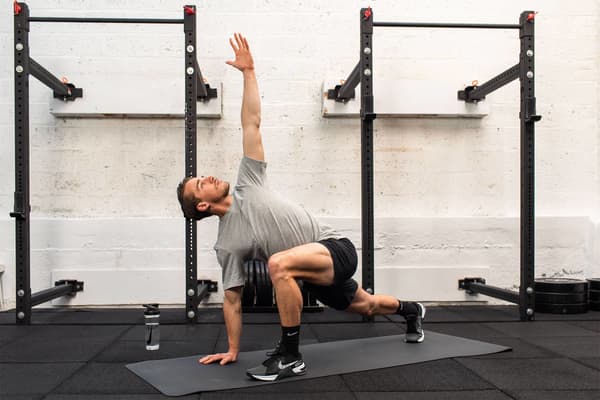Battle Ropes: What They Are, Their Benefits and Exercises You Can Do
Sport & Activity
Rev up your resistance training workout with this all-important piece of equipment.
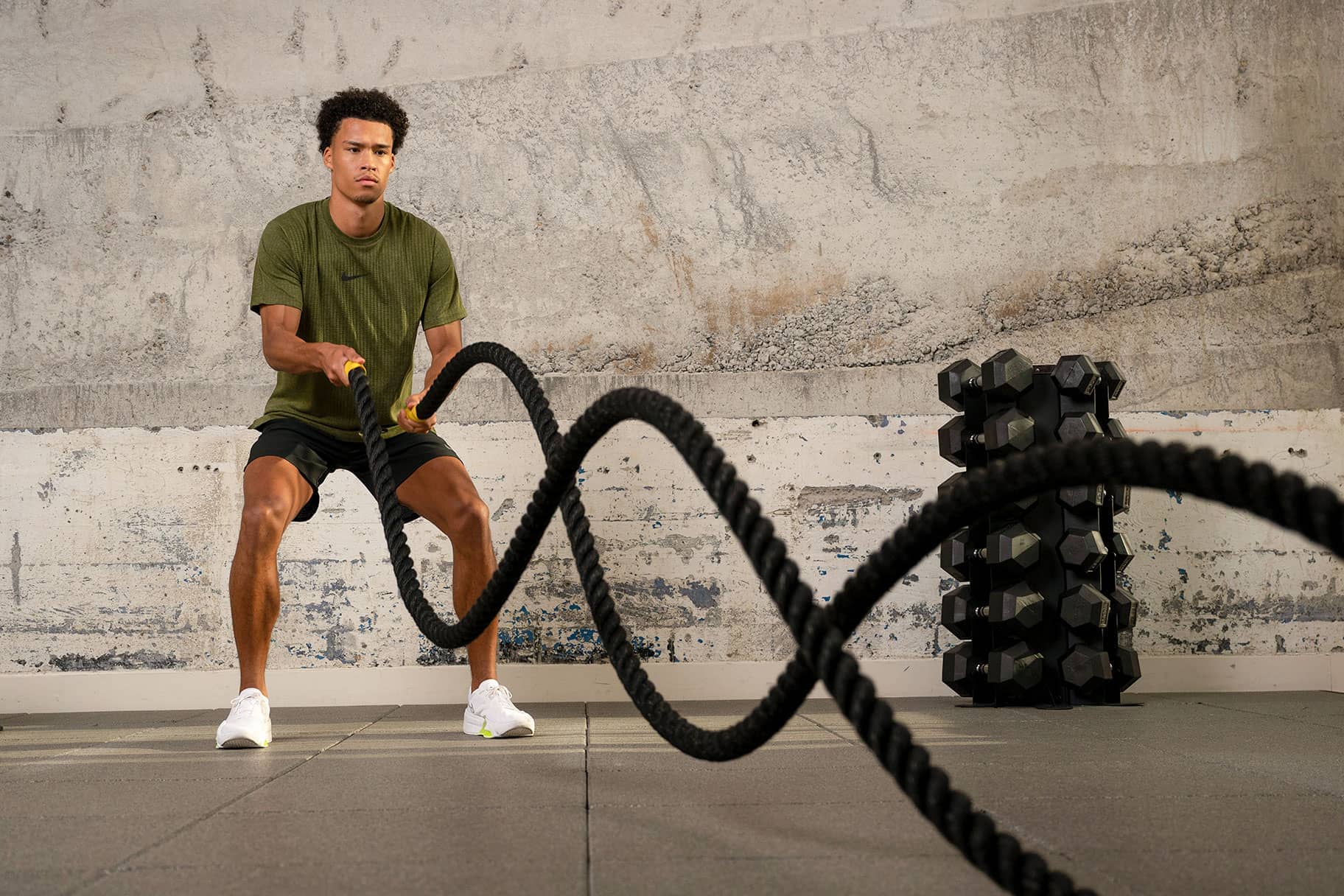
Battle rope exercises and workouts are often lauded by personal trainers. And for a good reason: they test your stamina and physical strength while offering a host of benefits.
Below, Alexa Javens, NASM-certified personal trainer, and Yusuf Jeffers, NASM CPT, explained the potential benefits of including a battle rope workout in your sweat sessions.
Benefits of Battle Ropes
Utilising battle ropes is one way to incorporate functional training into your routine, and improve strength, cardiovascular endurance and power, Javens said.
Research has suggested that functional training may improve athletic performance, specifically speed, power, strength, flexibility, agility, balance and, aerobic and muscular endurance. This is made possible by the inclusion of multidimensional and multi-plane movement patterns, and acceleration, deceleration and stability movements. Battle ropes are also a versatile piece of equipment and, when used correctly, can improve your core strength, power and endurance, Jeffers said.
Beyond using battle ropes to improve your all-round performance, you can also use them to target specific muscle groups. You can also do a full-body workout with them depending on the exercises you choose, Javens said.
For instance, to isolate specific muscle groups in the shoulders and back, you should opt for movements such as single- and double-arm slams with your battle ropes. To target multiple groups of muscles at once, you'll probably have to combine movements. For example, you can do double-arm slams while simultaneously performing reverse lunges.
If you want to incorporate high-intensity training into your battle rope routine sans high-impact movements like jumping, you can also accomplish that goal based on the movements you choose. Choosing high-intensity exercises over high-impact exercises is a good option if you can't perform plyometrics as they put little to no impact on your joints, Javens said.
Simply put, battle ropes are easy to set up, portable and can be used to perform a variety of exercises, Jeffers said.
(Related: What's the Difference Between Dry Needling and Acupuncture?)
Battle Ropes Tips: What to Know Before Getting Started
Battle ropes vary in size and width, typically 9 to 15 metres in length and 4 to 8cm in diameter. Use this information when you purchase battle ropes, or when figuring out which ones to use at the gym. Determining what size and weight combination depends on your current fitness level and that will require trial and error, Javens said.
The ropes will need to be tied or placed through an anchor that is connected to a wall or the ground. But, if you're training with them at home or in a makeshift gym, "you can get creative on how you do this with a pole, heavy kettlebell or official anchor", Javens said.
"Thicker ropes are generally heavier", Jeffers said, adding that "longer ropes usually help with fluidity of movement". If you want to focus on power during your workout, Jeffers recommended using a lighter option, as they can be moved more quickly than compared to a heavier option.
As it pertains to specific battle rope exercises, "one of the great benefits of using battle ropes is that there generally isn't a high skill level required to perform the exercises properly", Jeffers said.
For those who are just starting out, Jeffers recommended performing single-arm waves, double-arm waves and alternating waves (see instructions below) for a total of two to three sets at 30 seconds work intervals. As you progress, Jeffers suggested increasing the working time intervals to 60 to 90 seconds per movement, noting that the focus should be on maintaining your power output.
Generally, when it comes to increasing the difficulty of these exercises, Jeffers recommended upping the time intervals, challenging stability (like kneeling, balancing on one leg, or on a Bosu ball) and adding complementary movements such as lunges, burpees and speed skaters.
Javens offered another beginner-friendly workout: three to four sets of 20 seconds of single- and double-arm slams. Be sure to rest for at least 30 seconds between each set.
Looking for a more advanced version of this workout? Perform the same exercises while simultaneously doing squats or alternating reverse lunges. Try doing each exercise for three to four sets, working for 45 seconds and taking 15 seconds of rest. When it comes to your form, you'll want to engage your core and maintain an athletic stance (a soft bend in the knees, hips and back), Javens said. Depending on the exercise, you may need to tweak your form slightly, and if you're unsure about technique, consult a trainer.
Before jumping into any workout, it's important to warm your muscles up to prevent injury, prepare them for the movement patterns you'll be doing and get the most out of your routine. For the following exercises, Javens said to focus on warm-up movements that will target your chest, back, shoulders and triceps. Consider movements such as bodyweight flys, pull-apart flys with a resistance band, high-to-low planks and Y raises.
5 Battle Rope Exercises
Perform each exercise for a total of three to four sets, working for 20–30 seconds and taking 20–30 seconds of rest in between sets. As you progress, try working your way up to 30–60 seconds of work, only taking 15–20 seconds of rest between sets.
1.Single-arm Wave:

- Start standing in an athletic stance with your feet approximately hip-width apart, holding one end of the battle rope in your left hand with an overhand grip (your thumb should be on top).
- With control and without bending your wrist, begin to move your hand up and down with force. The movement should come from the shoulders as opposed to the lower arm. This will create momentum and a "wave" throughout the rope.
- Alternate arms.
2.Double-arm Wave:

- Start standing with your feet approximately hip-width apart, holding each end of the battle rope in your hands with an overhand grip (your thumbs should be on top).
- With control and without bending your wrists, begin to move your hands up and down simultaneously with force. The movement should come from the shoulders as opposed to the lower arm. This will create momentum and waves throughout the rope.
3.Alternating Waves:

- Start standing with your feet approximately hip-width apart, holding each end of the battle rope in your hands with an overhand grip (your thumbs should be on top).
- With control and without bending your wrists, begin to move your left hand up with force. As the left rope begins to lower down, repeat the motion with your right hand.
- Continue alternating between left and right sides, maintaining a rhythm. This will create momentum and waves throughout the rope.
4.Single-arm Slam:

- Start standing with your feet approximately hip-width apart, holding one end of the battle rope in your left hand with an overhand grip (your thumb should be on top).
- With control, raise the rope and then slam it down.
- Repeating this movement, slam with as much force as possible, maintaining your foot position and keeping both feet "glued" to the ground.
- Switch to your right arm and repeat.
5.Double-arm slam:

- Start standing with your feet approximately hip-width apart, holding each end of the battle rope in your hands with an overhand grip (your thumbs should be on top).
- With control, raise both ends of the rope and then simultaneously slam them down.
- Repeating this movement, slam both ropes down simultaneously with as much force as possible, maintaining your foot position and keeping both feet "glued" to the ground.
Training Tip: If you've tried the above workout and feel comfortable upping the intensity—that is, you don't feel exhausted and you're performing the movements with proper form even as you begin to fatigue—you can do the previously mentioned movements at a higher intensity and/or faster tempo. Additionally, you can use heavier ropes for an increased challenge. You can also make the movements more difficult by performing them in positions such as a plank, or by performing the "base" movement with a plyometric movement such as a burpee as Jeffers recommended.
If you're unfamiliar with training with battle ropes, consider working with a certified personal trainer who can help you choose an appropriate weight and length combination. A trainer can also give you guidance and tips on how to improve your form and technique.
Words by Tamara Pridgett
